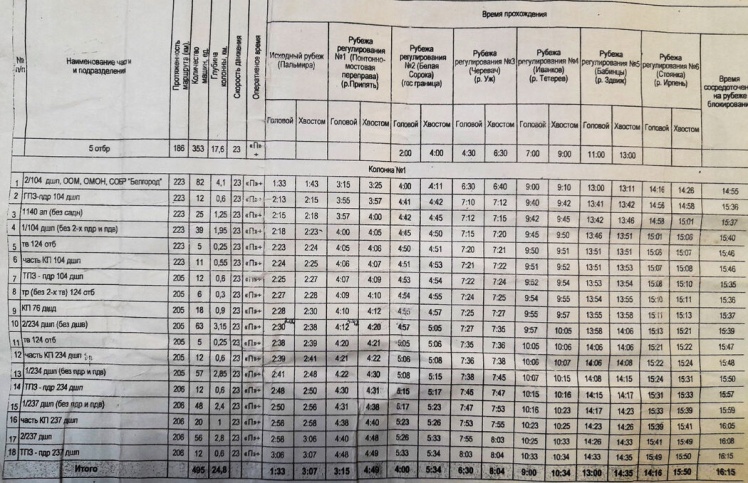The New York Times newspaper showed a detailed plan of the movement of Russians to Kyiv, provided by the Main Directorate of Intelligence of Ukraine. The document shows that the first convoy to Kyiv was the fighters of the Russian OMON and SOBR units.
Corporal Nikita Chybrin, a 27-year-old soldier in the motorized rifle brigade, told The New York Times reporters that he spent a month in Belarus for training. According to him, on February 23, he and his unit were celebrating Defenderʼs Day in the camp, snacking on sweets presented for the occasion, when their commander approached.
“Tomorrow you are going to Ukraine to beat out some nationalistic shit,” the commander told them. The Russian military did not receive further explanations.
Before dawn on February 24, Corporal Chibrin and his comrades loaded into a tracked armored personnel carrier. According to him, they had no instructions and no understanding of where they were going.
According to another Russian soldier who was stationed in Belarus, he learned that he was going to war only an hour before his unit started to march. The order was both simple and extremely optimistic: follow the vehicle ahead and reach Kyiv within 18 hours.
According to the schedule and logbook of the unit, obtained by the publication, the first vehicles in his column were to leave Belarus and arrive on the outskirts of Kyiv by 2:55 p.m., even sooner than the soldier was told. These documents have been reviewed and authenticated by three independent military analysts.
The Russian military schedule with a detailed schedule of the movement of airborne troops that are to leave Belarus and arrive on the outskirts of Kyiv. Photo: GUR.
But the column immediately got bogged down. According to the Russian soldier, it took more than a day just to cross the border with Ukraine.
Then it got worse. Day after day, the logbook recorded delays, Ukrainian attacks, hundreds of wounded and dead soldiers, and destroyed vehicles.
Secret orders to other Russian units, obtained by The New York Times, were issued just hours before Putin announced the start of a “special military operation.” Four independent military analysts said the documents were credible.
A document seized from the 26th Tank Regiment detailing invasion plans was issued on February 23, 2022.
Orders for part of the 26th Tank Regiment anticipated possible resistance from the Ukrainians. But the Russians still planned an almost unhindered 24-hour rush from Ukraineʼs border with Russia to a point near the Dnipro River — about 402 kilometers.
According to the plan of the occupiers, the unit was supposed to dig in about a two-hour drive to Kyiv and block Ukrainian troops that would advance from the south and east. The unit had to complete the task on its own.
“There are no forces and means for reinforcement,” Russian military orders say.
In addition, according to The New York Times, in March during a meeting with Israeli Prime Minister Naftali Bennett, Russian President Vladimir Putin admitted that the Ukrainians were stronger than he was told.
“Itʼs probably going to be a lot more difficult than we thought. But the war is on their territory, not on ours. We are a big country, we have patience,” Putin was quoted as saying by the newspaper.
According to The New York Times, one of the NATO members warned the allies that Putin is ready to accept the death or injury of up to 300,000 Russian servicemen. As of December 17, 97,690 Russian soldiers died in Ukraine.


